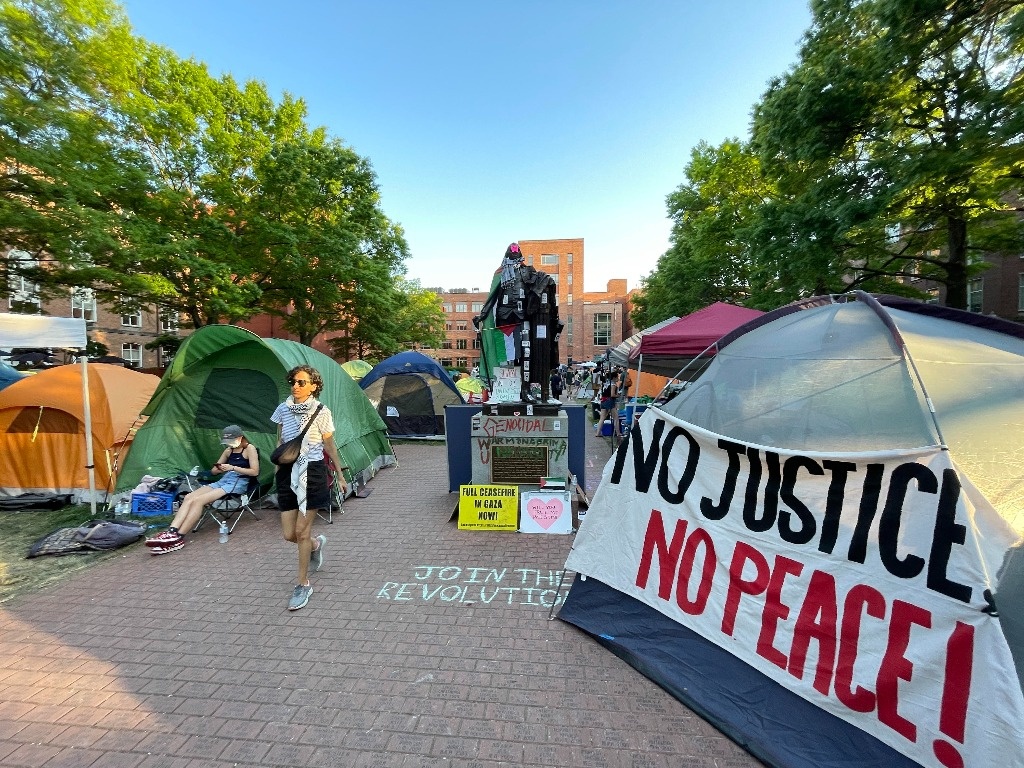Nueva York y Washington. Just 56 years after the student sit-in and occupation against the Vietnam War at Columbia University was violently repressed by police in 1968, on Tuesday night hundreds of riot police stormed the same academic building on that campus. prestigious university arresting more than 100 students.
Hamilton Hall was occupied by students who had defied Chancellor Nemat Shafik’s order to dismantle their sit-in in the middle of campus on Monday. She declared that the occupation of the building endangered the security of the university and requested police intervention, for the second time in the last two weeks. Shortly after, hundreds of riot police arrived, parked a truck outside the building, set up a bridge to the second floor, broke a window and entered to arrest students who maintained non-violence.
The mayor of New York, Eric Adams, former police captain, declared this Wednesday that the action was carried out at the request of the rector and justified the repression as necessary in the face of “unacceptable” tactics of the students and accusing that there were some “agitators” externals and an anti-Semitic climate. But observers did not detect, nor have they disclosed, the identity of the alleged agitators, and the accusation of anti-Semitism was once again questioned by Jewish students who have participated in the protests.
Columbia is, as it was 56 years ago, a cradle of the antiwar student movement. The students now staged a sit-in starting April 17 against Israel’s war against the Palestinians with the demand that the private university – one of the richest in the country – withdraw its investments in companies that do business with Israel and proclaim an immediate ceasefire and an end to Washington’s complicity in that war. Other universities joined in, and that student movement multiplied with the first repression in Columbia.
Some of the protesters remembered their predecessors in the sixties, and part of their sit-in was set up in one of the same places where protest acts were carried out more than half a century ago, and they even used, on purpose, parts of the vocabulary, for example, declaring their sit-in as a “liberated zone.”
The occupation of Hamilton Hall was carried out by a group of students and was not a collective decision of all the participants in the sit-in, although it was supported by them in the face of the negative response of the authorities to their demands and the threat of the rector to dismantle the camp. on Monday or be suspended from the institution. Upon occupying the academic building, they locked themselves in and hung a banner renaming the building “Hind’s Hall” in honor of Hind Rajab, a 6-year-old Palestinian girl who was killed in Gaza by Israeli fire.
56 years ago, on the same campus, an axis of the great national anti-war student movement was established. In April 1968, students occupied five buildings and closed the university, and a week later, starting on April 30, the university authorities opted for the repressionwith police entering through tunnels and violently liberating occupied buildings, including Hamilton Hall. In that time, more than 700 students were arrested with more than 100 injured due to the use of force by the police.
It is worth noting that the protests at Columbia in 1968 culminated in several student victories, including the end of a contract with the Pentagon, and also led to eventual resignations of the university’s president and vice president.
Another axis of the student movement of the sixties was the University of California, where today a sit-in against Israel’s war and US complicity in Gaza has also been set up.
#Historical #echoes #student #rebellion #repression #universities
– 2024-05-02 20:10:25


